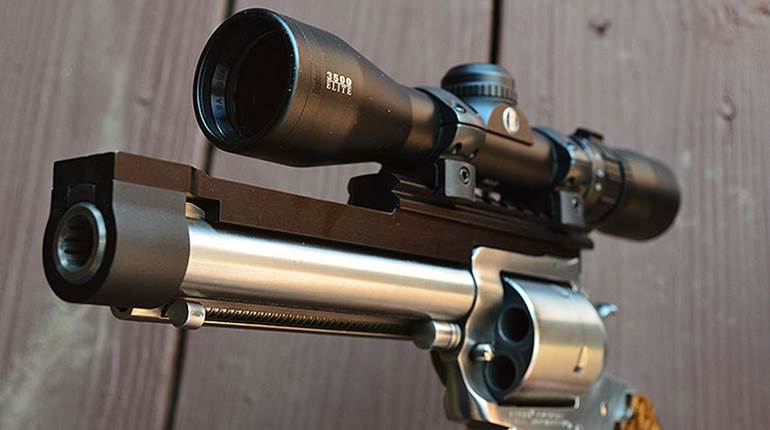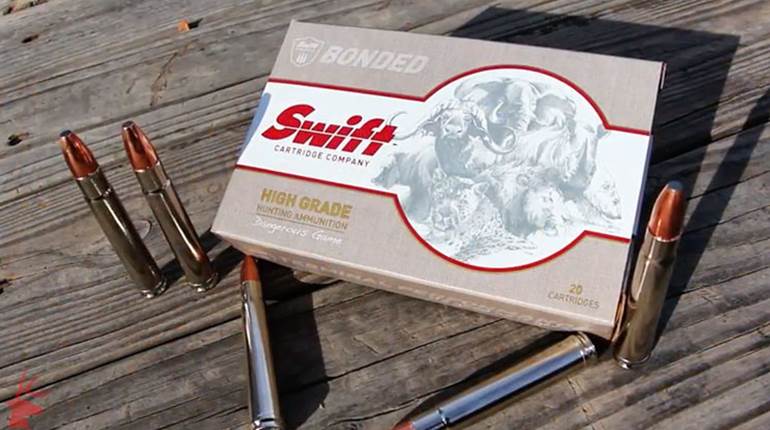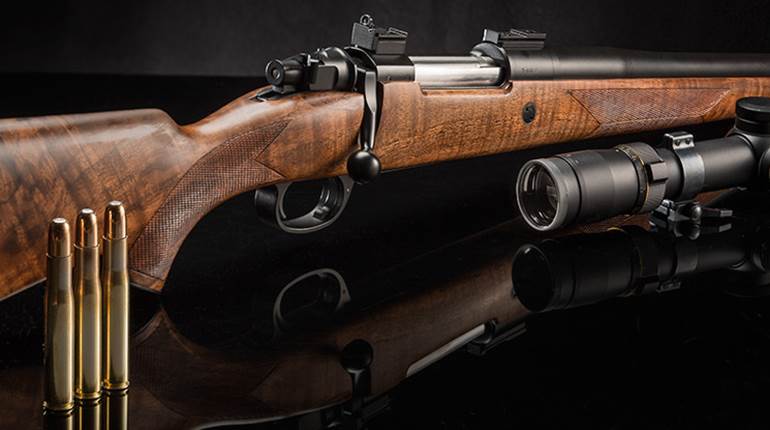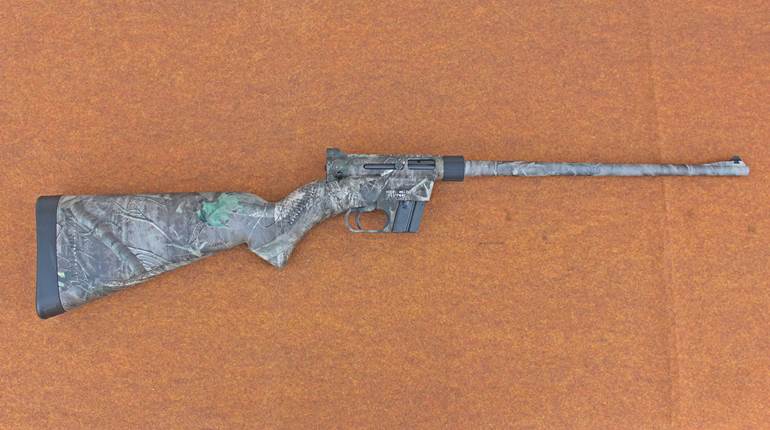
Little did I suspect this past February that the Insider had momentarily become some sort of unknowing psychic—more accuratey an idiot savant in my case. I was hunting in the Central African Republic with my favorite rifle, a .375 H&H Magnum custom built on a Winchester Model 70 by noted gunsmith Sterling Davenport, and also shooting a handload featuring my nominee for the single-best, all-around, big-game bullet—Swift A-Frame. I had no clue that I held in my hands two entities that soon would merge in a business deal.
My Davenport custom Model 70 sports the finest craftsmanship and materials, including what is widely recognized as synonymous with best-grade “bottom metal,” a one-piece trigger guard and floor plate machined from a single billet of steel. It’s called Blackburn Bottom Metal.
Cue the Twilight Zone theme song. The Insider has just learned that Swift Bullet Co. has acquired Blackburn Bottom Metal Co. from Ted Blackburn. Ted will serve as a consultant, in the background, to assure a smooth, easy transition to the new entity, Swift-Blackburn Custom Gun Metal. The 81-year-old machinist has been building his signature Blackburn bottom metal and a custom trigger for the Mauser 98 since 1964, however, in the past few years, custom gunsmiths have experienced long gaps in availability of Blackburn’s beautifully crafted steel.
“The quality of Blackburn bottom metal and the way it’s made from a single piece of bat stock will not change, but three things will change with this acquisition,” said Bill Hober, president of Swift Bullet Co. “Obviously the ownership and physical location will change, but most importantly of all, you’ll be able to get the product. You order it, we ship it.”
All of the machinery and tooling will be moved from Blackburn’s facility in Utah to the Swift Bullet Co. plant in Quinter, Kan. “This is an exciting venture for us,” Hober added. “It assimilates into Swift Bullet Co. very nicely with little or no disruption and no additional operating expense.
“We purchased everything necessary to manufacture Blackburn products turn-key. We wanted to insure that we have the exact manufacturing process that Ted has used for years—and we do. We wanted to assure that the quality, craftsmanship, procedures, and manufacturing methods and materials that Ted has used for year all remain exactly the same.”
The distinctive profile of Blackburn’s bottom metal has attracted top custom gunmakers for nearly 50 years. The floorplate release is hidden, no unsightly visible latch, making it ideal for engraving. Additionally, the sculpted lines of Blackburn’s clean design are completely in tune with that unique and special creation we call an American classic custom rifle.
For details on pricing and availability, log-on to www.swiftbullets.com or call (785) 754-3959.




































